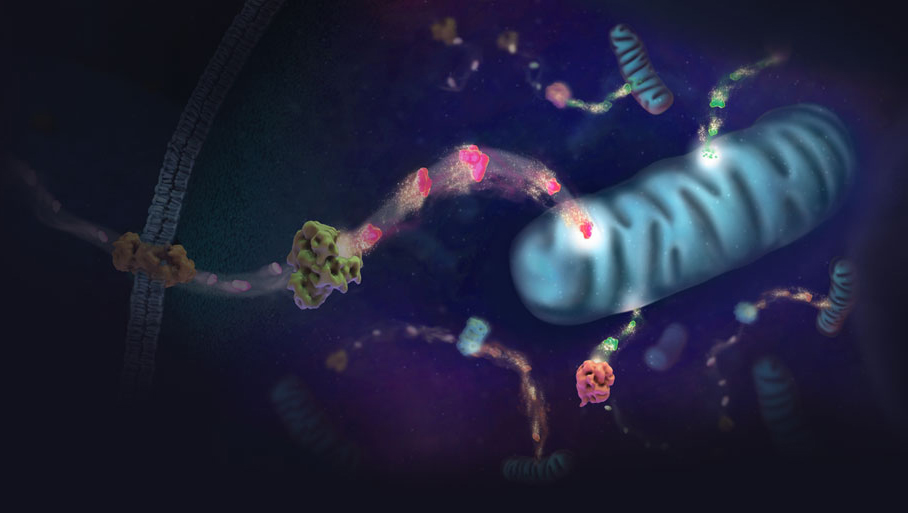The Wnt/β-catenin pathway, long studied in the context of developmental biology, has become increasingly recognized for its role in a wide range of human diseases. Its dysregulation has been implicated in cancer, fibrosis, immune modulation, and neurodegenerative conditions—making it a clinically actionable target across diverse therapeutic areas1. In this blog, we cover the fundamentals of Wnt/β-catenin signaling, highlight ongoing research efforts to understand its role in disease, and show how combining live-cell imaging with luminescent assays complements functional studies.
Continue reading “Understanding Wnt Signaling Through β-Catenin Localization in Live Cells”Bioluminescence
Using Dual-Luciferase Assays to Identify the Role of Non-Coding RNAs in Disease
In recent years, non-coding RNAs—especially microRNAs (miRNAs) and long non-coding RNAs (lncRNAs)—have emerged as powerful regulators of cellular behavior. These molecules modulate gene expression, often by targeting mRNAs for translational suppression or degradation. Two recent studies—one focused on osteoarthritis and the other on 5-Fu-resistant colorectal cancer—illustrate how these non-coding, regulatory RNAs operate within disease-relevant signaling networks, providing new points for therapeutic intervention.

Both studies use the pmirGLO Dual-Luciferase miRNA Target Expression Vector to evaluation predicted miRNA activity. This dual-luciferase system offers a clean and quantifiable way to validate miRNA–mRNA interactions using a simple bioluminescent readout. By cloning the 3´ untranslated regions (UTRs) of suspected targets downstream of a firefly luciferase reporter and normalizing against Renilla luciferase, researchers can rapidly confirm whether a miRNA directly regulates its target.
Continue reading “Using Dual-Luciferase Assays to Identify the Role of Non-Coding RNAs in Disease”Bioluminescence vs. Fluorescence: Choosing the Right Assay for Your Experiment
From enzyme activity to gene expression, light-based assays have become foundational tools in life science research. Among these, fluorescence and bioluminescence are two of the most widely-used approaches for detecting and quantifying biological events. Both rely on the emission of light, but the mechanisms generating that light—and the practical implications for experimental design—are quite different.
Choosing between a fluorescence or bioluminescence assay isn’t as simple as picking between two reagents off the shelf. Each has strengths and limitations depending on the application, instrumentation, and biological system. In this blog, we’ll walk through how each method works, where they shine (and where they don’t), and what to consider when deciding which approach is right for your experiment.
Continue reading “Bioluminescence vs. Fluorescence: Choosing the Right Assay for Your Experiment “Advancing Neurodegenerative Disease Modeling: A Novel iPSC-Based Luminescence System for Parkinson’s Disease Research

Advancing our understanding of neurodegenerative diseases requires model systems that faithfully recapitulate the biology of human neurons. A recent study by Gandy et al. in the International Journal of Molecular Sciences introduces an innovative luminescence-based platform to explore the role of Parkinson’s disease (PD)-associated genes in living cells. By leveraging human induced pluripotent stem cells (iPSCs) and CRISPR-mediated endogenous tagging, researchers at the Early Drug Discovery Unit at The Neuro (Montreal Neurological Institute-Hospital) at McGill University and Health Canada have created a powerful system for investigating protein expression and function in a physiologically relevant setting.
Continue reading “Advancing Neurodegenerative Disease Modeling: A Novel iPSC-Based Luminescence System for Parkinson’s Disease Research”Alzheimer Disease and Metabolic Dysfunction: A Critical Intersection in Brain Health
This guest blog post is written by Alden Little, a Marketing Intern at Promega.
Alzheimer disease (AD) is one of the most devastating neurodegenerative disorders, affecting millions worldwide. While much attention has been given to amyloid plaques and tau tangles, emerging research suggests that metabolic dysfunction in the brain plays a crucial role in the disease’s progression. A recent study published in Acta Neuropathologica by Schröder et al. sheds new light on how astrocytes—the brain’s metabolic support cells—are affected in AD, and how their dysfunction impacts neurons.

Glo-ing Above and Beyond: Simplifying Science with MyGlo Reagent Reader
Introduction
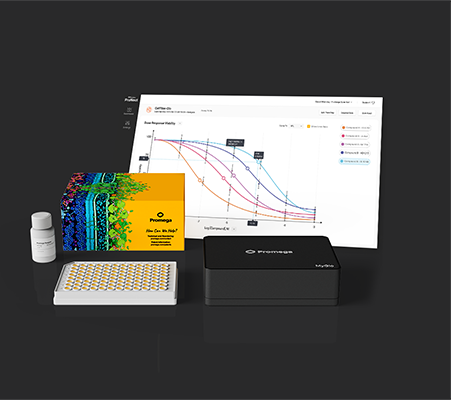
When it comes to laboratory tools, few things resonate more than the experiences of researchers who rely on them daily. At the University of Cincinnati the MyGlo Reagent Reader has quickly become an indispensable lab companion, due to its compact design, affordability, and intuitive interface with tailored apps for Promega assays. But what truly sets the MyGlo Reagent Reader apart is how it empowers scientists to focus on their research.
Take Ipsita Kundu, a third-year PhD student at the University of Cincinnati working in Dr. Tim Phoenix’s lab. The Phoenix lab, dedicated to studying innovative brain tumor therapies, faced challenges with their outdated luminescence reader. They needed an affordable, reliable solution to streamline Ipsita’s experiments without compromising accuracy or efficiency.
The MyGlo Reagent reader is Nominated for a 2025 Select Science, Scientists’ Choice Award in the category of Life Sciences Product of the Year. Do you agree that it is a game changer? Vote today!
The MyGlo Reagent Reader was the answer. This blog highlights how this integrated solution is redefining laboratory workflows, enabling researchers to maximize productivity and maintain focus on groundbreaking discoveries. Let’s delve into Ipsita’s story and explore how MyGlo transformed her research.
Continue reading “Glo-ing Above and Beyond: Simplifying Science with MyGlo Reagent Reader”Live-Cell Imaging: It’s Time to See What Else Your Luminescence Assays Can Tell You
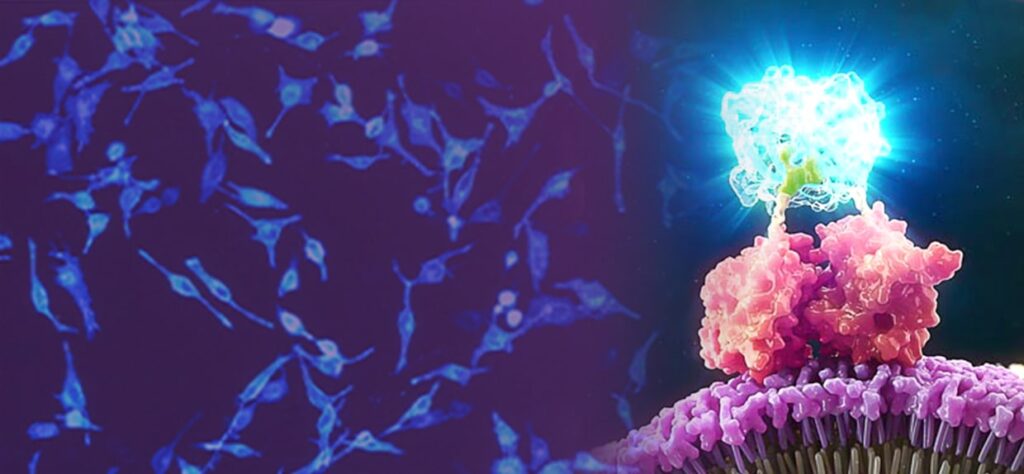
Luminescent live-cell assays are powerful tools for cellular biology research. They offer both qualitative and quantitative insights into processes such as gene expression, cell viability, metabolic activity, protein and small molecule interactions, and targeted protein degradation. But what if you could go beyond the numbers and actually see what is happening in your cells? With luminescent imaging, you have the opportunity to uncover more dynamic data by visualizing what happens with your cells in real time.
Why Luminescent Imaging?
Bioluminescent reporters such as NanoLuc® Luciferase reporters are well-suited for use in bioluminescent imaging studies. The extreme brightness means that exposure times can be reduced, compared to the time required for other luminescent reporter proteins. Its small size also makes it less likely to perturb the normal biology or functionality.
Another benefit of bioluminescence for imaging is the inherent stability and sustainability of the bioluminescent signal, which does not require external excitation like fluorescent tags. This allows direct visualization of protein dynamics in living cells without the need for repeated sample excitation. The lack of external excitation also reduces the risk of phototoxicity and photobleaching, common issues that can adversely affect cell viability and signal integrity over time.
Applications Across Cellular Research
Luminescent imaging complements traditional luminescence assays by adding spatial and temporal dimensions. With luminescent live-cell imaging, researchers can visualize NanoLuc® Luciferase assays to gain a deeper understanding of the real-time cellular processes occurring in each experiment. Applications include:
- Determining which cells provide signal
- Analyzing mixed cell populations
- Identifying rare events
- Monitoring protein:protein interactions
- Identifying protein localization and translocation
- Tracking protein degradation and stability over time
- Visualizing ligand:protein interactions (target engagement)
Luminescent Imaging in Action
Targeted Protein Degradation
Selectively targeting proteins for removal from the cell—instead of inhibiting protein activity—is a newer approach with therapeutic potential. In this method, the protein is targeted for degradation using the cell’s natural ubiquitin proteasome system (UPS). The degradation process is initiated by compounds such as molecular glues and proteolysis targeting chimeras (PROTACs) linking the target protein to an E3 ligase. Once this linkage occurs, the cell’s UPS does the rest.
Luminescent substrates with increased signal stability, such as the Nano-Glo® Extended Live Cell Substrate, enables researchers to image targeted protein degradation in their cells in real time. In the example shown below, Nano-Glo® Vivazine™ Live Cell Substrate was used to image degradation of the GSPT1 protein by the CC-885 degrader over 5 hours.
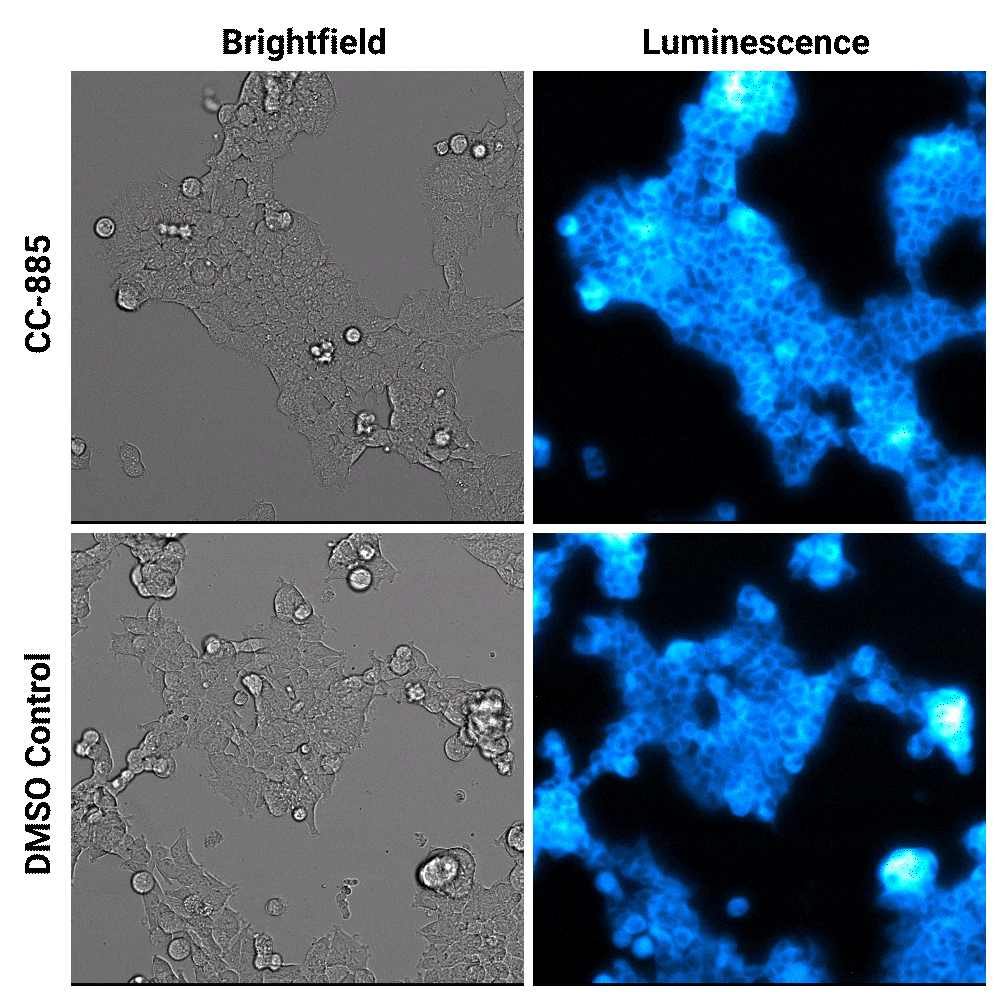
Targeted protein degradation over time. HEK293 cells expressing endogenous HiBiT-tagged GSPT1 and stably expressing LgBiT were treated with CC-885 degrader or DMSO control treatment. Assayed with Nano-Glo® Vivazine™ Live Cell Substrate and imaged over 5 hours using GloMax® Galaxy Bioluminescence Imager.
Combining Luminescent and Fluorescent Imaging to Detect Protein:Small Molecule Interactions
Using bioluminescence resonance energy transfer (BRET)-based assays such as NanoBRET® assays allows you to detect protein:protein interactions by measuring energy transfer from a bioluminescent protein donor to a fluorescent protein acceptor. These assays can be used to monitor changes in protein interactions over time, making them a useful tool for small-molecule screening.
The schematic below illustrates how the NanoBRET® NanoGlo® Detection Systems can be used to visualize target engagement. The cells on the left are expressing a NanoLuc® fusion protein, resulting in a luminescent signal. Adding a fluorescent small tracer (center) results in energy transfer and a fluorescent signal (right). Using an imaging platform that has luminescence and fluorescence imaging capabilities will let you see this energy transfer in action.

Bringing the Power of Luminescent Imaging to Your Lab
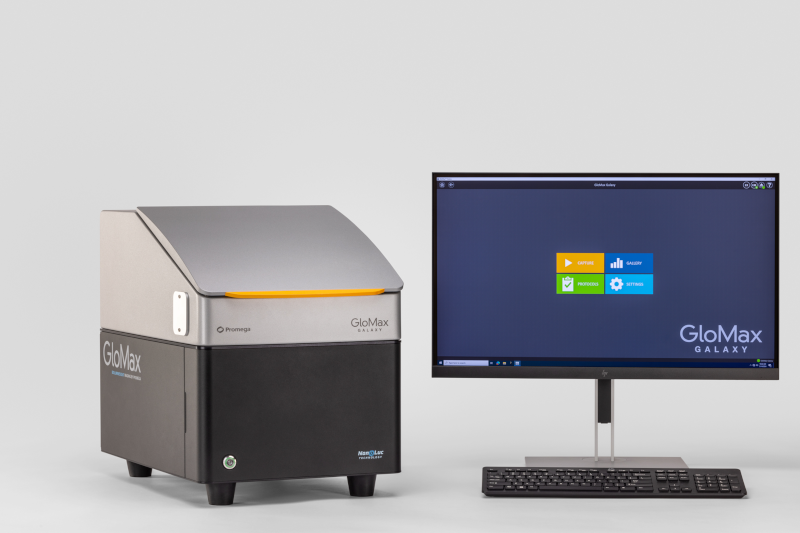
Having the right tools is critical to unlocking the full potential of bioluminescence imaging. The GloMax® Galaxy Bioluminescence Imager is uniquely positioned to offer researchers the power of imaging in an accessible, benchtop instrument. The Galaxy is a fully equipped microscope that can visualize output from NanoLuc® Technologies and offers luminescence, fluorescence and brightfield imaging capabilities. By offering a user-friendly platform for live-cell luminescent imaging, the GloMax® Galaxy empowers researchers to enrich their understanding of functional and dynamic cellular events across a cell population.
Conclusion
Luminescent imaging can enrich what we learn from live-cell assays and offers an unprecedented view into the dynamics of cellular processes. From monitoring drug responses to visualizing protein interactions, this technology delivers insights that go beyond the capabilities of traditional assays.
Whether you’re studying cancer biology, drug development or cellular signaling, luminescent imaging can help you uncover what’s hidden in your data and see your research in a whole new light.
Additional Resources
GloMax® Galaxy Luminescent Imager, NanoBRET® Nano-Glo® Detection Systems and Nano-Glo® Vivazine live Cell Substrate are for Research Use Only. Not for Use in Diagnostic Procedures.
Neurons’ Role in FBP2 Regulation
Neuronal extracellular vesicles (NEVs) play a significant role in the communication between neurons and astrocytes, particularly by influencing metabolic processes such as glycolysis and lactate production. NEVs carry signaling molecules that affect the expression, degradation and oligomeric state of fructose 1,6-bisphosphatase 2 (Fbp2) in astrocytes, altering their metabolism (1).
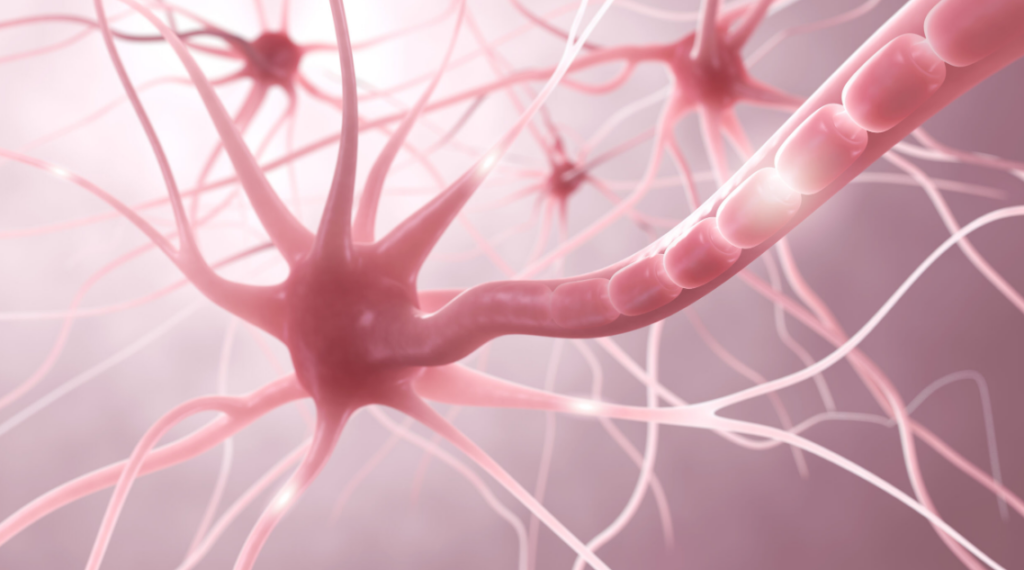
Basic Backstory on CNS Architecture
The central nervous system (CNS) is composed of an intricate cellular communications complex, divided generally into neurons and glial cells. Neurons form the electrical signaling network, with dendrites receiving and integrating signals via chemical synapses, and axons, some up to 1 meter in length, rapidly transmitting the signals.
Glial cells, including astrocytes, microglia and other cells, interact with neuronal cells to sustain this network. For example, glial cells regulate synapse formation and provide metabolic support to promote CNS homeostasis. Glial cell dysfunction contributes to most neural diseases and can even drive neurodegenerative processes (2).
What are Neuronal Extracellular Vesicles (NEVs)?
NEVs are formed by neurons via endocytosis and are released into the extracellular space where they interact with astrocytes. These transport vesicles carry a variety of molecules, including proteins and RNA, that influence cellular processes in recipient astrocytes.
NEV and Astrocyte Interactions
Fbp2 is an important enzyme involved in glycogen synthesis that also has nonenzymatic functions, including support of neuronal processes like long-term potentiation (LTP). LTP underlies synaptic strength and plasticity and is important in both learning and memory formation.
Visualize Protein:Protein Interactions with Bioluminescence Imaging
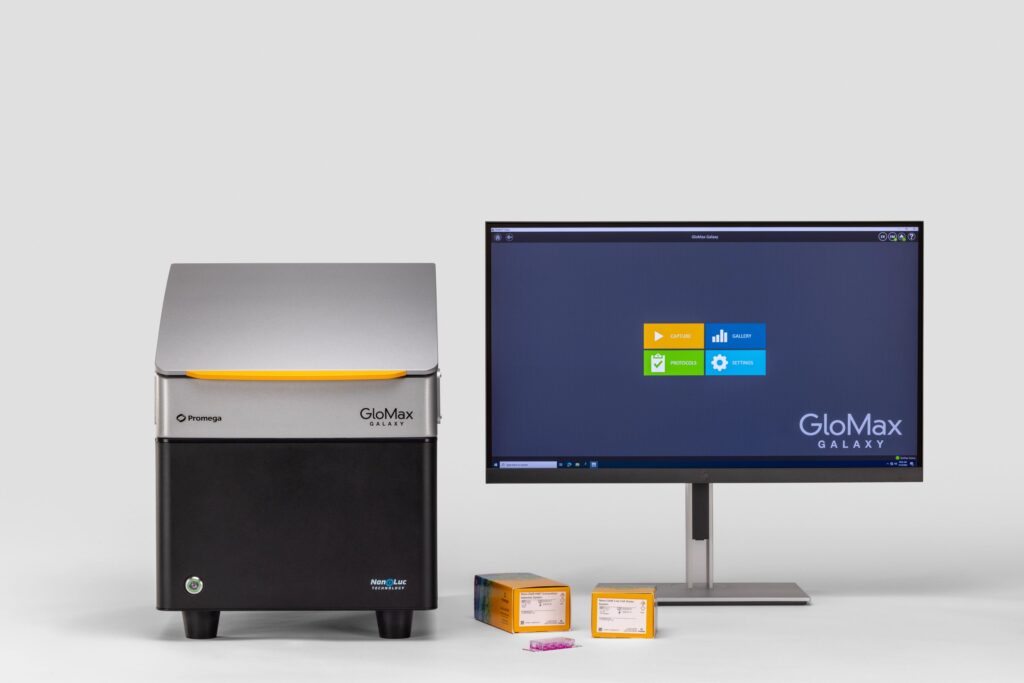
If you’re familiar with bioluminescence, you’ve probably used it in plate-based experiments to track various biological processes. You understand it provides distinct advantages over traditional fluorescence assays, particularly when it comes to sensitivity. However, there’s always that one nagging question: how representative is the signal on a cell-to-cell level?
Traditional approaches to decipher cell-to-cell signal rely on complex, time-intensive measures that only approximated the findings acquired through bioluminescence. That’s where the GloMax® Galaxy Bioluminescence Imager comes in. This new tool will enhance your ability to visualize proteins using NanoLuc® technology, going beyond simple numeric outputs to reveal what’s happening in individual cells.
NanoLuc® technology is well-known for its ability to assist in detecting subtle protein interactions in complex biological systems. This bright luminescent enzyme enables a much broader linear range than fluorescence, improving detection of small changes in protein activity, such as proteins interacting. Microplate readers measuring NanoLuc® assays rely on signal generated from many cells. This results in an approximation of what is occurring biologically. Truly validating those luminescent readings within a cell population has been challenging—until now. The GloMax® Galaxy allows you to perform bioluminescence imaging, moving beyond the numbers, offering the power to visualize protein interactions directly.
Continue reading “Visualize Protein:Protein Interactions with Bioluminescence Imaging”The Marvel of Malate: A Crucial Component in Cellular Energy Metabolism
Today’s blog written by guest author Kim Haupt.
Cellular energy metabolism is a complex biological process that relies on a suite of metabolites, each with distinct roles to maintain. Malate is one of these metabolites and is essential for maintaining cellular function through important roles in both energy production and redox homeostasis. In this blog, we highlight malate’s diverse roles and uncover some of its connections to human disease.
